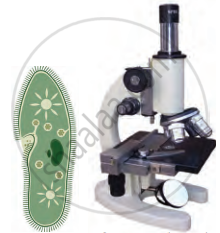Topics
Natural Resources – Air, Water and Land
- Natural Resources
- Atmosphere and Its Layers
- Air Around Us
- Composition and Components of Air
- Importance of Air
- Air Pollution and Its Causes
- Water: Our Lifeline
- Availability of Water
- Composition of Water
- Importance of Water
- Scarcity of Water
- Land
- Soil Formation
- The Importance of Conserving Earth’s Natural Resources
The Living World
Diversity in Living Things and Their Classification
Disaster Management
Substances in the Surroundings –Their States and Properties
Substances in Daily Use
Nutrition and Diet
- Nutrients and Nutrition
- Component of Food
- Carbohydrates
- Diseases Due to Deficiency of Carbohydrates
- Fats (Lipids)
- Diseases Due to Deficiency of Fats
- Proteins
- Diseases Due to Deficiency of Proteins
- Vitamin and Minerals
- Diseases Due to Deficiency of Vitamin
- Diseases Due to Deficiency of Minerals
- Fibre
- Diseases Due to Deficiency of Fibre
- Water
- Diseases Due to Deficiency of Water
- A Balanced Diet
- Nourishment and Malnutrition
- Food Adulteration
Our Skeletal System and the Skin
Motion and Types of Motion
Force and Types of Force
Work and Energy
- Force, displacement and work
- Energy
- The relationship between work and energy
- Forms of Energy
- Mechanical Energy
- Heat Energy (Thermal Energy)
- Light Energy
- Sound energy
- Chemical Energy
- Transformation of Energy
- Energy Resources
- Conventional energy resources or non-renewable energy resources
- Non-conventional energy resources or renewable energy resources
- Energy saving and green energy
Simple Machines
Sound
Light and the Formation of Shadows
Fun with Magnets
The Universe
- Introduction
- Body Structure of Animals
- Experiment
Introduction:
Animals come in many different shapes and sizes to help them survive in their environment.
Different Shapes and Sizes of Animals:
Animals have evolved to have different shapes to suit their environment. For example,
- An amoeba is so tiny that the human eye cannot see it.
- Elephants are huge and strong.
- Snails are small and move slowly.
- Fish are designed to swim in water.
- Kites and butterflies have wings to fly in the sky.
- Lizards crawl on walls with their special feet.
Each of these animals has a different body structure that helps it live in its environment.
Body Structure of Animals:
Most animals have common body parts, such as the head, neck, torso (main body), tail, and limbs (like legs, arms, or wings for movement). Inside their bodies, animals have different organ systems (like the digestive and respiratory systems) to carry out important functions, such as breathing, eating, and moving.
Experiment
1. Aim: To observe microorganisms in puddle water and understand that even microscopic organisms exhibit characteristics of life.
2. Requirements: water from a puddle, glass slide, microscope, and dropper.
3. Procedure
- Use a dropper to take a small drop of water from a puddle.
- Place the drop of water on a clean glass slide.
- Carefully cover the drop with a cover slip.
- Observe the slide under a microscope.
4. Observations
- Numerous microbes can be seen moving in the water droplet.
- Amoeba can be observed moving continuously.
- Paramecium, another unicellular organism, can also be seen.
- Comparatively, larger animals like horses, bears, and tortoises are multicellular.
5. Conclusion: Excretion is a key characteristic of living organisms, including these microscopic creatures.

Related QuestionsVIEW ALL [7]
Match the pairs.
| A Group | B Group |
| (a) Amphibian | (1) A Monkey |
| (b) Vertebrate | (2) A Snake |
| (c) With scales | (3) A Frog |
